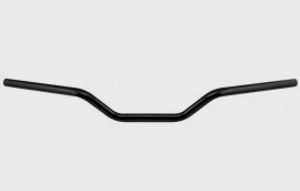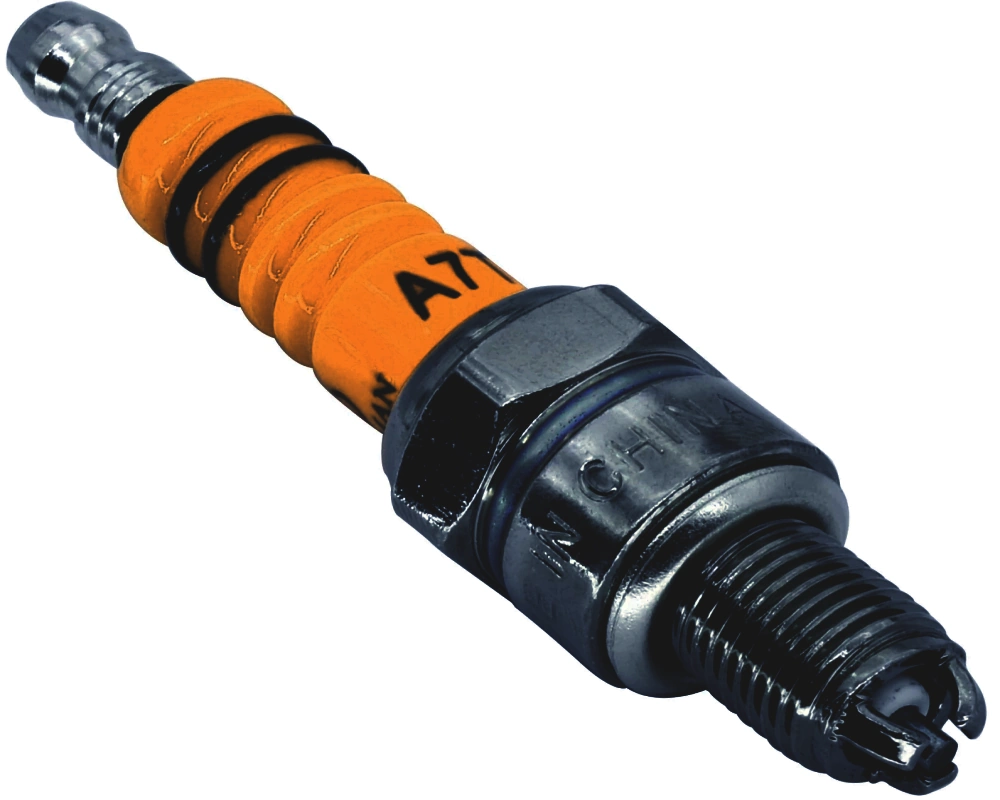The handlebar is one of the essential parts of an ATV. It provides balance, support for weight, and steering control. The correct ATV handlebar measurement can make your ride much more enjoyable. It has a comfortable grip, natural body alignment, and enough height. These keep you from feeling cramped.
Choosing the best for your ATV involves considering the size of the handlebar and factors such as material and mounting types. Like a mountain bike, the clamping diameter of most ATVs is 7/8 and 1 1/8 inches. When choosing an ATV handlebar, you should ensure that the clamping diameter of your bar fits snugly on the top and bottom clamps.
ATV Handlebar Sizes
Handlebars help in reducing vibration on the bar end. They come in different shapes to suit the needs of various riders. They include:
1. Straight Handlebars
Straight bars provide a better grip and are often preferred by more experienced riders. They are also more comfortable than bars for people who spend long hours on the ATV. Most straight bars are best for riding on a trail and general use, even when riding a dirt bike. You should ensure that the straight bar you choose is long enough to prevent rider fatigue while riding your ATV.
2. Tapered Handlebar
The taper increases as it gets closer to the clamping point, making this light bar popular with riders looking for quick acceleration and optimum control, especially in tight spots. However, they are not ideal for taller drivers since they are more likely to be uncomfortable.
3. Aerodynamic Handlebars
These bars provide an aerodynamic cutout on the front of the bar, making them better for riders who drive their ATVs at high speeds or race competitively. They also prevent getting your hand stuck between trees when riding through forests since they have a lower position than most bars.
4. Rise Handlebars
These bars have a slight upward bend near the beginning, giving them a more comfortable grip for people who prefer an upright position on their ATVs. The rise bars are usually preferred by novice riders and those who ride their quad for recreational purposes.
5. Dropped handlebars
Most commonly found on racing ATVs, these bars have a low position from the bar’s base. They provide better handling capabilities while driving at high speeds in the terrain. Like a complex motorcycle handlebar, dropped bars are not ideal for beginners because they can be less comfortable than other bars for riders.
6. Wrap handles
These are designed to provide a better grip of the ATV rider’s hands, and they also prevent any blisters by giving extra padding where you need it most. Wrap bars offer a more comfortable ride than straight or drop handlebars because they fit well in your palms without causing cramps or numbness even after hours of riding.
ATV handlebar Measurement
-
Widths
Handlebars are available in different widths to provide a better grip for riders depending on the size of their hands. The overall width measurements range from 15/16 inches (small) to 31/32 inches (wide). Opt for narrower bars if you have smaller hands, while taller individuals should go for wider bars. The handlebar width should be approximately the same as your shoulders to ensure you control and brake the bike effectively.
-
Height
A good handlebar height ranges from 31 inches (for riders up to five feet tall) to 42 inches (for riders over six feet tall). The size of the handlebar should be proportionate to your height when you are sitting on the ATV.
-
Diameter
ATV handlebars have a clamping diameter of either ¾ or ½ inches, and this measurement will depend on how easy it is for you to attach accessories like handguards or GPS units depending on their size. If you do not want to buy additional items, the clamping diameter of your bar should fit snugly on the top and bottom clamps so as not to wobble or loosen up while riding. The diameter of the handlebar should also be proportional to the size of your hands for a comfortable grip.
-
Length
Handlebars are available in different lengths – 24 inches, 25 inches, 26 inches, or 27 inches, depending on what you need. If you prefer driving off-road most of the time, choose an ATV handlebar that is at least 28 inches long so that you can get a better grip and balance when traversing rough terrains. If you ride on smooth paved roads, then choose one with a shorter length to provide more agility while driving.
Factors to consider when selecting ATV handlebars
Material of the handlebar
Before purchasing an ATV bar, you should consider its material. Various types available today on the market vary significantly in price and quality. The most common materials used for manufacturing bars include steel, aluminum alloy, fiberglass-reinforced plastic, and titanium.
Aluminum alloy is the most popular material. It is lightweight for less fatigue on long rides while still providing strength. Steel bars are heavier than aluminum. But, they offer more stability and durability compared to their counterparts. They are ideal for use in challenging environments like forests or deserts where your ATV may collide with rocks or trees. Fiberglass bars are the cheapest option. They are made from recycled materials combined with resin to provide strength. But these can be heavy enough to cause steering issues for some riders. Professional off-roaders use titanium because of its lightweight and ability to resist corrosion under extreme weather conditions, making them perfect in all terrains.
Video Credit – Rocky Mountain ATV MC
Types of handlebar Mounts
There are several types of mounts for most ATV handlebars. They include the following:
-
Clamp-on mounts
Clamp-on-mounts have a clamping point on each end that attaches to the ATV frame or clamps onto an existing bar. It is usually used with straight bars and rise handlebars. You can consider a clamp-on mount if you look for a new bar with less expense. It helps you save money compared to other types of mounts.
-
Rigidly mounted bar
The rigidly mounted bar is attached directly to the ATV frame because it has no clamps on either end, providing a smoother connection between your ATV and handlebar. It also makes the ride more stable for taller or heavier than average without sacrificing control or agility while riding.
-
Rise handlebar mount
The rising bar is mounted with one clamp on the front and another at the rear of your ATV. It offers riders more control than a straight or rigidly-mounted bar because it reduces vibration. Just like a mountain when riding over rough terrains by pushing down with your arms. It also gives you a better grip than a rigidly-mounted bar which is essential for off-road riding.
-
Post mounts
These handles can be attached directly to the ATV frame without clamps, which require drilling holes in the mounting points. They are more expensive since they include all hardware and brackets needed for installation, making them perfect if you do not want any issues during installation.
Height and weight of the rider
The rider’s weight is essential in choosing bike handles because it determines how much pressure you should apply for a good grip. A bar with medium or soft rubber for lighter riders will provide enough traction, while heavy-weighted riders need something more solid and rigid to get a better grip.
The rider’s height is another vital factor to consider when purchasing ATV handlebars. It determines how much leverage you have on the bar while steering and controlling your bike. If you are shorter, a smaller bar will give you more control than taller riders who need wider bars for more stability to prevent a shock while riding at high speeds. Bar height also depends on the design of your ATV.
Price
Before making a purchase, you should consider how much money you are willing to spend on an ATV handlebar because it will determine the quality and features of your bike. If you have limited funds but still want something that provides a good grip, then you should consider a bar with rubber grips. They are inexpensive compared to other bars, but they still give riders the most stable and comfortable control while riding in extreme conditions.
Size of the ATV
Another factor to keep in mind when choosing the right ATV handlebar size is your machine. If you have a bigger ATV, you need wider bars at higher heights than smaller models for better stability during acceleration and braking, which affect control. The size of the ATV also determines the length of your ATV handlebars.
FAQ:
-
What do handlebar measurements mean?
Handlebar measurements indicate the length, height, and width of the ATV handlebars.
-
How do you measure reach and drop on handlebars?
You measure the reach and drop on handlebars by measuring its center. The center of the bar is where you hold it while riding. Therefore, measuring it gives you accurate reach and drop specifications.
-
Do all handlebars fit all stems?
No handlebars do not fit all stems because it depends on the size of your stem. It would help if you bought a bar that matches the specifications and does not interfere with the throttle.
-
What is the standard size of the handlebar?
The standard size of the ATV handlebars is 22 inches. However, depending on your desire and need for a solid grip while riding on rough terrains, some can be as large as 26 or 28 inches.
Conclusion
Handlebar helps riders prevent accidents by choosing the best handlebars that fit their needs and budget. The key to finding the right handlebar size is by considering factors like weight, height, and overall width measurements before making a purchase decision.









